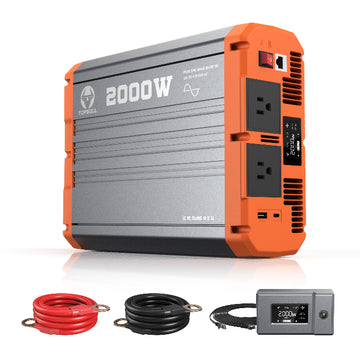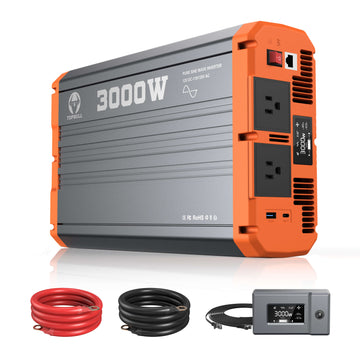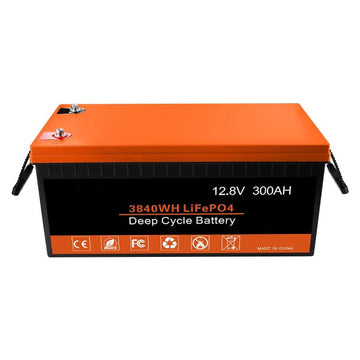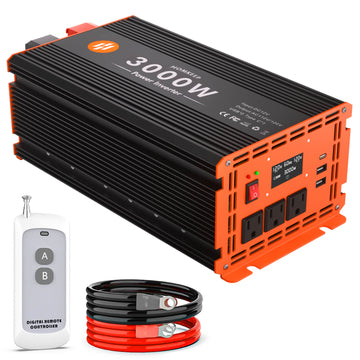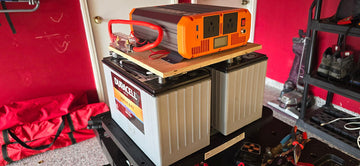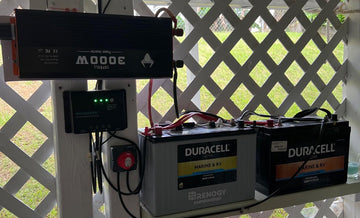As the demand for automotive electronics and portable power increases, inverters are increasingly being used in a wide range of scenarios as an important tool for power conversion. While exploring the many possibilities for charging automotive batteries, a common question surfaces: can an inverter be used to charge automotive batteries? This article will delve into this question and give advice on proper charging.
Can an inverter be used to charge a car battery
Inverters can't be used to charge car batteries directly, they should be charged using a dedicated charger. The core reason for this is that there is a fundamental difference in the design objectives between inverters and battery chargers:
-
Inverter: Converts low voltage DC (e.g., 12V/24V) to high voltage AC (e.g., 120V) for use by AC equipment.
- Battery Charger: Converts AC or DC power to stable, controlled DC power for safe battery charging.
Trying to charge a battery through an inverter is like using a “hose” to fill a “tank” - both are liquids, but the medium and process are completely mismatched.
Why inverters can't be used to charge car batteries
Functional limitations
-
Lack of charging algorithm: Battery charging needs to follow the three stages of “constant current→constant voltage→trickle”, which is precisely regulated by the dedicated charger through the chip. The inverter only provides a fixed voltage output, which cannot be adapted to the change of battery power.
- Poor voltage stability: the inverter output is AC power with periodic fluctuations (e.g. 120V±5%), while battery charging requires DC voltage error of less than 1%.
Energy conversion loss
- If you force charging with the inverter, you need to configure an additional rectifier (AC → DC), resulting in two conversions of energy: Battery DC → inverter AC → rectifier DC → battery.
- The energy loss in this process reaches 25%-35%, which is equivalent to charging only 0.7 kWh with 1 kWh of electricity, so the economy is extremely low.
Safety Hazards
-
Reverse current impact: When the output of the inverter is accidentally short-circuited, a reverse current may surge into the battery, resulting in damage to the electrode plate.
- Thermal runaway risk: Inverters without heat dissipation design may have an internal temperature of more than 85°C when running at high load for a long time, triggering components to burn out.
You may need: an article to understand what is an inverter, a complete guide
The Right Way to Charge Your Car Battery
When it comes to charging your car battery, choosing the right charging equipment is crucial. Here are some common methods of charging car batteries.
Car-specific Battery Charger
A car-specific battery charger is a device designed to effectively and safely charge a car battery. It usually has a smart charging function that automatically detects the battery status and adjusts the current and voltage to prevent overcharging or overheating. In addition, these chargers are usually lightweight and easy to use, with multiple charging modes for different types of car batteries (e.g., lead-acid and lithium batteries), and can be used at home or in the garage to ensure that the batteries are always in the best condition.
Backup starter/mobile power:
This portable device can be connected directly to the battery to provide extra power to the battery, especially for emergencies. To use, simply connect the positive and negative terminals and start your car.
Solar Charger:
If you often park in sunny areas, you can use a solar charger. It charges the battery through solar energy and is suitable for long periods of time when the vehicle is not in use. This method is slower to charge, but is environmentally friendly and suitable for keeping the battery charged.
Car Generator:
If the battery is low, try starting the vehicle and letting the car generator charge the battery. Travel a distance and the generator will recharge the battery, but this method is not one to rely on for long periods of time, especially for older batteries.
Vehicle Indirect Charging (Jump Start):
If the battery is very low, you can use another vehicle's battery to jump start it via a hitch cord (jump leads). Connect the batteries of both vehicles via the jump leads, start the vehicle that is working properly, and then try to start the defective vehicle.
By choosing the right charging program, you can ensure that your car battery is charged efficiently and safely, extending the life of the battery.
Using an Inverter Correctly
While inverters cannot be used to charge car batteries, they have a wide range of applications in other areas. For example, when camping or traveling outdoors, an inverter can be used to convert the DC power from a car battery to AC power for devices such as laptops and cell phones.

When using an inverter, you should pay attention to the following points:
Choose the right inverter: Select the right inverter according to the power of the device and the capacity of the battery to ensure stable and reliable output.
Follow the instruction manual: Read the instruction manual of the inverter carefully to understand its functions, limitations and safety precautions.
Regular inspection: Check the connection and wiring of the inverter regularly to ensure it is in good condition and avoid malfunction.
Recommended Reading:
How to choose a car inverter
Portable inverter buying guide
Summarize
In summary, using an inverter to charge a car battery is not feasible and poses safety risks. In order to ensure the safety and longevity of the car battery, it should be charged with a special charger and follow the relevant charging specifications and precautions.

